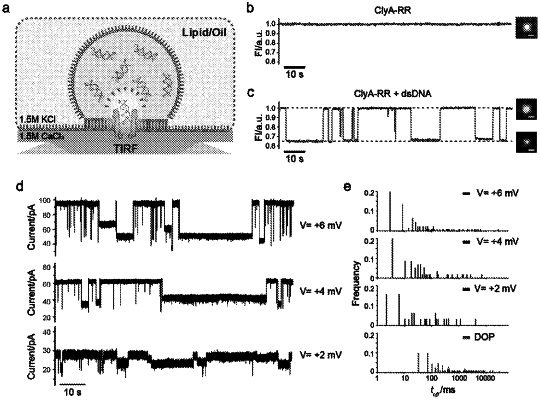| CPC G01N 33/582 (2013.01) [G01N 1/4005 (2013.01); G01N 21/6428 (2013.01); G01N 2001/4016 (2013.01); G01N 2021/6439 (2013.01)] | 20 Claims |

|
1. A system without electrodes for identifying an analyte, the system comprising:
(a) a first compartment having a first aqueous solution in it, wherein the first aqueous solution comprises a fluorescent reporter molecule configured to emit fluorescence when bound to an ionic species;
(b) a second compartment having a distinct second aqueous solution in it, wherein the second aqueous solution comprises the ionic species which are specifically bound to said fluorescence reporter molecule; and
(c) a membrane separating the first compartment and second compartment; wherein the membrane between the first compartment and the second compartment has at least one inserted nanopore such that the first compartment and the second compartment are connected by the nanopore; wherein there is a chemical gradient of the ionic species between the first compartment and the second compartment, and said chemical gradient is configured to drive the ionic species, in order to diffuse from the second compartment to the first compartment through the nanopore.
|